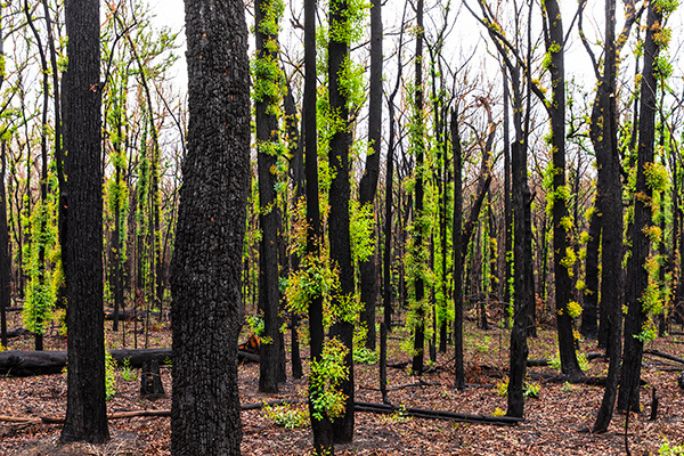Lesson summary
Students investigate fire management approaches taken in Australia’s Northern Territory. Drawing on research from 20 years of cultural burning and fire management practices in the Northern Territory, students will summarise and communicate the features and outcomes of this approach. By presenting to, and discussing with their peers they will be challenged to consider how these practices can be applied to their own local areas.
Learning intentions:
Students will...
- research the outcome of traditional fire management in the Northern Territory
- investigate how traditional Aboriginal and Torres Strait Islander Peoples fire regimes have informed this approach
- identify the impacts on ecosystems, populations and other social systems.
Success criteria:
Students can...
- summarise findings from 20 years of traditional fire management
- communicate findings and outcomes from scientific research
- explain ways that traditional Aboriginal and Torres Strait Islander Peoples fire regimes have informed modern approaches to fire management
- create a poster that communicates effectively using scientific language.
Lesson guides and printables
Curriculum links
Select your curriculum from the options below.
Lesson details
Curriculum mapping
Australian Curriculum content descriptions:
Year 9 Science:
- Scientific understanding, including models and theories, is contestable and is refined over time through a process of review by the scientific community (ACSHE157)
- People use scientific knowledge to evaluate whether they accept claims, explanations or predictions, and advances in science can affect people’s lives, including generating new career opportunities (ACSHE160)
- Communicate scientific ideas and information for a particular purpose, including constructing evidence-based arguments and using appropriate scientific language, conventions and representations (ACSIS174)
Syllabus outcomes: SC5-12ES, SC5-9WS, SC5-13ES
General capabilities: Critical and Creative Thinking, ICT Capability, Intercultural Understanding
Cross-curriculum priority: Sustainability OI.2, OI.3, OI.7, OI.9
Relevant parts of Year 9 Science achievement standards: Students analyse how biological systems function and respond to external changes with reference to interdependencies, energy transfers and flows of matter. They evaluate others’ methods and explanations from a scientific perspective and use appropriate language and representations when communicating their findings and ideas to specific audiences.
This lesson is part of the wider unit of work Beyond the Bushfires – Secondary
Time required: 65 mins
Level of teacher scaffolding: Low – Supervise student work creating an infographic. Facilitate a sharing session between students once completed
Resources required
- Access to simple presentation software such as PowerPoint or Photoshop
- Access to a printer or projector
- Article – The Conversation – Indigenous innovation could save a billion tonnes of greenhouse gases
- Laptops or personal computer access
- (Optional) A3 or A2 sized card or paper
- (Optional) Coloured pens and markers
- (Optional) Coloured card stock
Skills
This lesson is designed to build students’ competencies in the following skills:
- Creativity
- Critical thinking
- Communication
Additional info
In partnership with The Conversation, the Beyond the Bushfires series brings the words of scientists who are actively involved in research and science communication into classrooms throughout Australia. Students will explore evidence-based research embedded in the context of real-world practice.
Additional thanks to the Ian Potter Foundation, John T Reid Charitable Trusts and The Myer Foundation, for generously supporting the development of these lessons


Welcome back!
Don't have an account yet?
Log in with:
Create your free Cool.org account.
Many of our resources are free, with an option to upgrade to Cool+ for premium content.
Already have an account?
Sign up with:
By signing up you accept Cool.org's Terms and Conditions(Opens in new tab) and Privacy Policy(Opens in new tab).